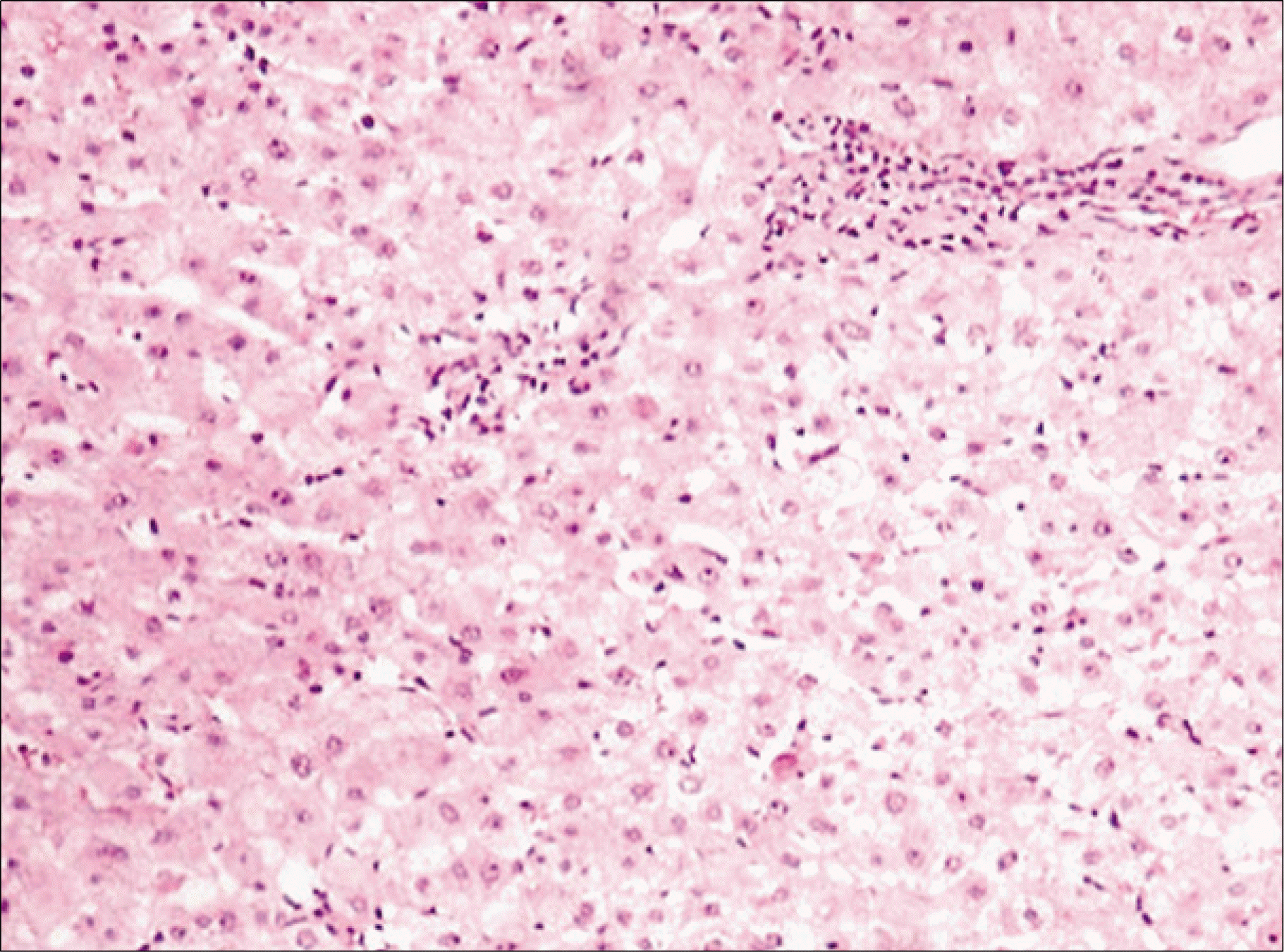Abstract
A 52-yr-old male with multiple myeloma underwent autologous stem cell transplantation in June 2002. In August 2004, the multiple myeloma had recurred. The patient received allogenic stem cell transplantation in September 2005. Before undergoing transplantation, the presence of HBsAb and the absence of HBsAg were noted. The patient underwent allogenic peripheral blood stem cell transplantation (PBSCT) from a sibling donor who was hepatitis surface antibody (HBsAb) positive and hepatitis surface antigen (HBsAg) negative. Nineteen months after the PBSCT, the liver function tests showed elevation of the aminotransferases. The patient was HBsAg positive and HBsAb negative. The liver biopsy specimen revealed hepatitis. The reactivation of a hepatitis B virus infection, in a hepatitisB immune patient, referred to as reverse seroconversion, is a rare complication of hematopoietic stem cell transplantation.
REFERENCES
1). Lawrence GL. Immune recovery after bone marrow transplantation. Hematol Oncol Clin N Am. 1990. 4:659–75.
2). Senecal D., Pichon E., Dubois F., Delain M., Linassier C., Colombat P. Acute hepatitis B after autologous stem cell transplantation in a man previously in-fected by hepatitis B virus. Bone Marrow Transplant. 1999. 24:1243–4.

3). Hui CK., Sun J., Au WY, et al. Occult hepatitis B virus infection in hematopoietic stem cell donors in a hepatitis B virus endemic area. J Hepatol. 2005. 42:813–9.

4). Goyama S., Kanda Y., Nannya Y, et al. Reverse seroconversion of hepatitis B virus after hematopoietic stem cell transplantation. Leuk Lymphoma. 2002. 43:2159–63.

5). Ma SY., Lau GK., Cheng VC., Liang R. Hepatitis B reactivation in patients positive for hepatitis B surface antigen undergoing autologous hematopoietic cell transplantation. Leuk Lymphoma. 2003. 44:1281–5.

6). Knöll A., Boehm S., Hahn J., Holler E., Jilg W. Reactivation of resolved hepatitis B virus infection after allogeneic haematopoietic stem cell transplantation. Bone Marrow Transplant. 2004. 33:925–9.

7). Kempinska A., Kwak EJ., Angel JB. Reactivation of hepatitis B infection following allogeneic bone marrow transplantation in a hepatitis B-immune patient: case report and review of the literature. Clin Infect Dis. 2005. 41:1277–82.

8). Dhédin N., Douvin C., Kuentz M, et al. Reverse seroconversion of hepatitis B after allogeneic bone marrow transplantation: a retrospective study of 37 patients with pretransplant anti-HBs and anti-HBc. Transplantation. 1998. 66:616–9.
9). Onozawa M., Hashino S., Izumiyama K, et al. Progressive disappearance of anti-hepatitis B surface antigen antibody and reverse seroconversion after allogeneic hematopoietic stem cell transplantation in patients with previous hepatitis B virus infection. Transplantation. 2005. 79:616–9.





 PDF
PDF ePub
ePub Citation
Citation Print
Print



 XML Download
XML Download